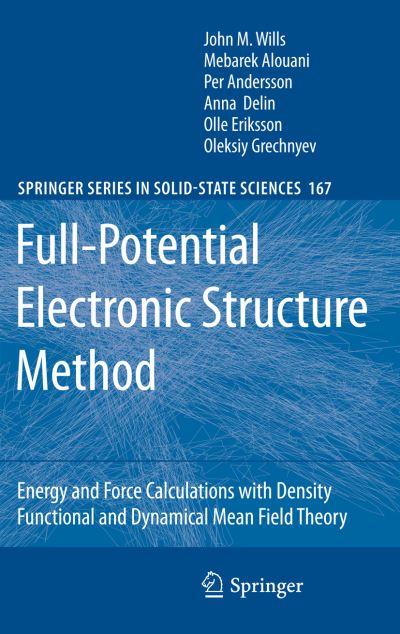
This is a book describing electronic structure theory and application within the framework of a methodology implemented in the computer code RSPt. In 1986, when the code that was to become RSPt was developed enough to be useful, it was one of the ?rst full-potential, all-electron, relativistic implem- tations of DFT (density functional theory). While RSPt was documented p- asitically in many publications describing the results of its application, it was many years before a publication explicitly describing aspects of the method appeared. In the meantime, several excellent all-electron, full-potential me- ods had been developed, published, and become available. So why a book about RSPt now? The code that became RSPt was initially developed as a personal research tool, rather than a collaborative e?ort or as a product. As such it required some knowledge of its inner workings to use, and as it was meant to be m- imally ?exible, the code required experience to be used e?ectively. These - tributes inhibited, but did not prevent, the spread of RSPt as a research tool. While applicable across the periodic table, the method is particularly useful in describing a wide range of materials, including heavier elements and c- pounds, and its ?exibility provides targeted accuracy and a convenient and accurate framework for implementing and assessing the e?ect of new models.
| ISBN: | 9783642266249 |
| Publication date: | 27th January 2013 |
| Author: | John M Wills, Mebarek Alouani, Per Andersson, Anna Delin, Olle Eriksson, Oleksiy Grechnyev |
| Publisher: | Springer an imprint of Springer Berlin Heidelberg |
| Format: | Paperback |
| Pagination: | 200 pages |
| Series: | Springer Series in Solid-State Sciences |
| Genres: |
Condensed matter physics (liquid state and solid state physics) Mathematical physics |